Preparing For Oil Painting On Paper
April 8, 2022For oil painters who find themselves eager to paint but reluctant to spend too much time or money on surface preparation, you might try working on paper. Paper can be reasonably priced, easy to prepare and less formal than panel or stretched canvas. If prepared properly and maintained with longevity in mind, paper can be a permanent substrate for sketches, studies and finished and framed oil paintings.
Preparing Paper For Oil Painting
Paper, like other natural fiber substrates such as linen or canvas, needs to be sized or primed before oil painting. Sizing protects the fibers from oil absorption, which can cause premature darkening, embrittlement and eventual degradation of natural fibers. The challenge of sizing paper is keeping it from warping.
We have recently tested various ways to size paper, looking for products that both protect from oil absorption and cause the least warping. For this test, we used two papers, untaped and unstretched: Arches Oil Paper and Arches Watercolour Paper (140-pound, hard sized.)
Oil Paper is specially formulated for use with oil-based media and requires no preparation before use. Since it is already sized, additional layers of acrylic product, Acrylic Gesso or Oil Ground can be used to reduce tooth or brush drag, but are not required to protect against oil absorption. The acrylic products we tested on Oil Paper caused very minimal to no warping and we saw no signs of oil absorption.
Of the product we tested on the 140-pound watercolor paper, Fluid Matte Medium, Acrylic Gesso, High Flow Medium and Matte Medium caused the least amount of warping. These products resisted oil penetration with two or three coats.
Surface coatings on Oil Paper
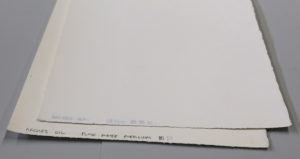
Best results with no oil penetration and minimal warping – Fluid Matte Medium and Acrylic Gesso on Oil Paper.
Surface coatings on Watercolour Paper
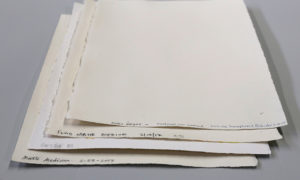
Good results with several coats – Fluid Matte Medium, Acrylic Gesso, Matte Medium and High Flow Medium on 140-pound watercolor paper.
Oil Absorption Test on Watercolour Paper (unsized 140 pound)
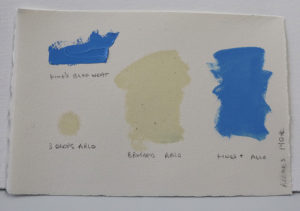
3 drops of Alkali refined linseed oil, brushed oil, King’s Blue neat and King’s Blue thinned with oil.
Rear of Oil Absorption Test on Watercolour Paper
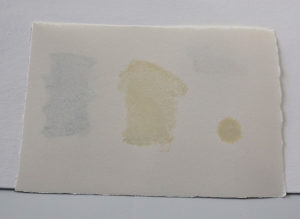
Test Conclusions:
Oil Paper with acrylic product, and 140# watercolor paper with two or more coats of acrylic product showed no oil penetration.
Oil Paper Preparation Tips
- Smooth the paper as much as possible between coats so as to not reinforce the curling with additional layers of acrylic.
- Gently run the paper over a table edge to oppose the warping. Alternatively, pressing the paper leaves it relatively flat.
- The final layer of priming should ideally be matte for increased tooth and porosity.
- Allow at least three days for acrylic products to fully dry before painting on them with oils.
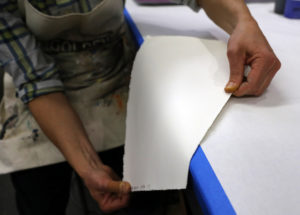
Image 5: Running paper over the table’s edge to oppose warping
Pros and Cons of Oil Paper
Benefits Of Oil Paper
Oil paper can be shipped flat or gently rolled around a tube and can be stored in a flat portfolio. For exhibition, works on paper can be adhered to panel or matted and framed under glass. Oil Paper on average is less expensive than cotton and linen canvas.
Oil Paper Drawbacks
The negative for paper is that it is fragile and will expand and contract in response to changes in humidity. As oil paint becomes older and more rigid, this movement, as well as any flexing of the paper, can cause cracking. Paper can also tear and retain the memory of folds or creases. Heavy applications of oils are not recommended for paper without proper reinforcement.
All substrates have their strengths and weaknesses and paper is no exception. In the end, paper is a good choice for those who are looking for an economical substrate that is relatively easy to prepare. Paper is great for landscape painting or studies done outside the studio.
Thank you to our friends at Golden Artist Colors Inc. for this article.

